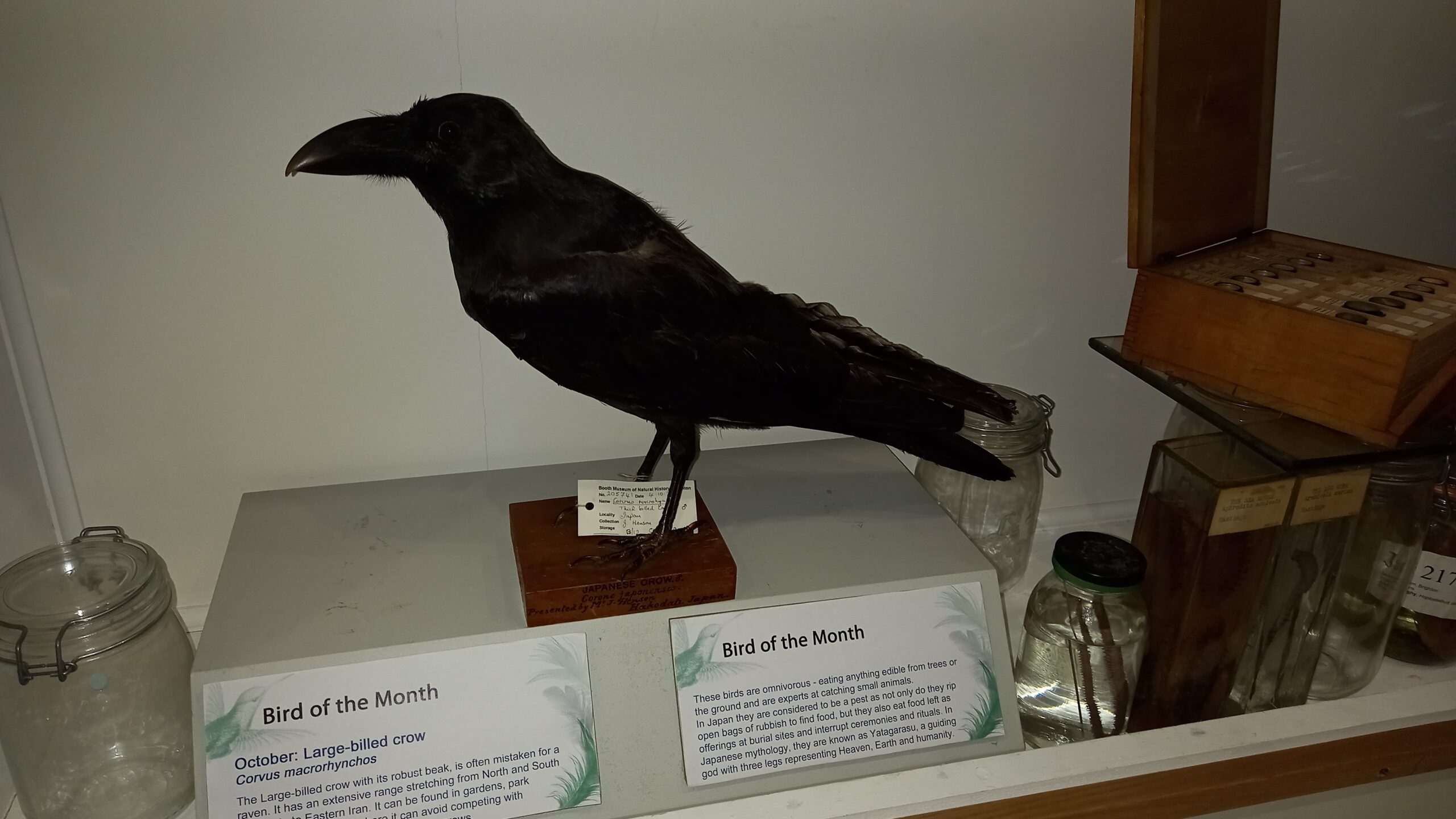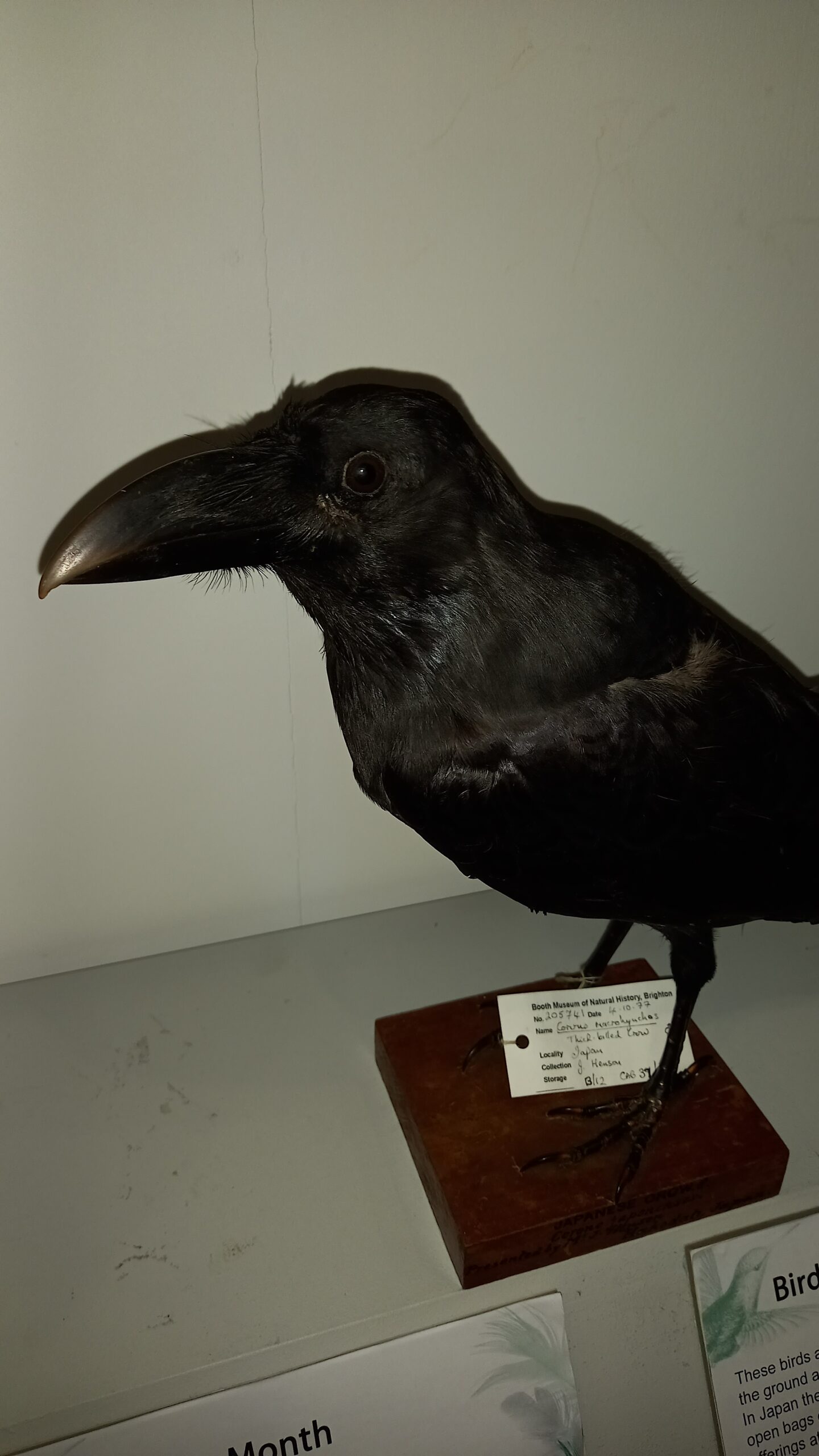Booth Bird of the Month: October – Corvus macrorhynchos, Large-billed crow

Large-billed crow
(Corvus macrorhynchos)
Our bird of the month for October is on display at the Booth Museum of Natural History.

The Large-billed crow with its robust beak is often mistaken for a raven. It has an extensive range stretching from north and southeast Asia to Eastern Iran. It can be found in gardens, parks and areas with some trees, but usually in open areas where it’s not competing with other corvids such as ravens or carrion crows. There can be thousands at some of the roosting sites with nests usually consisting of twigs and tall conifers placed high up on trees — although some examples have been found made of wool and even wire. The Large-billed crow usually has a clutch of four or five eggs, and these are blue green in colour and speckled with brown and grey.
A very adaptable bird, they are omnivorous — eating anything edible from trees or the ground and experts at catching lizards and small animals. In Japan they are considered to be a pest as they not only rip open bags of rubbish to find food, but they also interrupt ceremonies and rituals by eating food left as offerings at burial sites.
However, in Japanese mythology along with ravens, they are known as Yatagarasu meaning ‘eight-span crow’, a Shinto guiding god. Images depict them with three legs representing heaven, earth and man. Depictions of Yatagarasu date back to the early 1800s on Edo wood art and at one time the bird would have been seen as an important symbol of guidance.